|
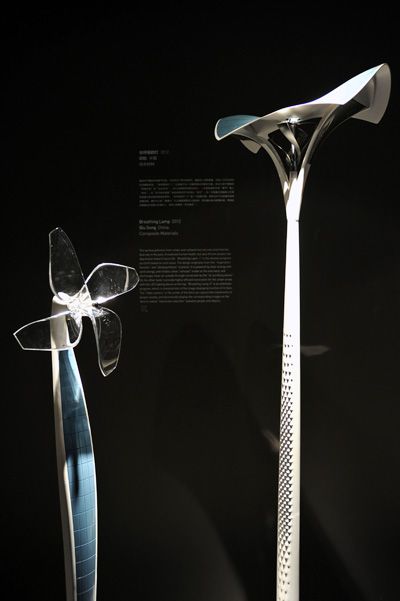 |
|
BREATHING LAMP: The lamp, created by Chinese artist Qiu Song, transforms inhaled dirty air into fresh air (WEI YAO) |
"The closer you stand to this garment, the more transparent it becomes," said Daan Roosegaarde, an artist from the Netherlands, introducing his hi-tech apparel to the audience at the Third Art and Science International Exhibition and Symposium at the China Science and Technology Museum on November 1.
The garment, named Intimacy, is made of opaque smart e-foils developed by Studio Roosegaarde. Smart sensors are woven within the material, causing the e-foils to become transparent through social interaction.
Daan continued, "This garment points to the future of fashion." His workshop has created a second-generation Intimacy garment, which becomes more transparent as the wearer's heart beats faster. "So if a man wearing this garment tells a lie to a woman, the garment will become transparent and expose his chest," Daan explained.
Daan has merged science and modern technology with his artistic imagination in developing his Intimacy dress.
"Since the 1960s, new technologies have given way to new forms of art. No matter what form artwork takes, the purpose of art remains unchanged, which is to inspire people to think about the relationship between humankind and nature and inspire changes to society," Qu Meng, a Chinese artist, told Beijing Review at the exhibition, which runs until November 30.
The exhibition has more than 100 displays in the form of new media, product design, architectural and environmental design, and visual design from 22 countries. The theme of this year's exhibition is "information, ecology and wisdom."
Theo Jansen—another Dutch artist—demonstrates his wisdom in creating a new life form, which he calls strandbeest, or "beach beast."
The beach beast is made of plastic tubes and lemonade bottles. It can walk on its own in a beach environment on both wet and dry sand and get its energy from the wind, which moves the feathers on its back and drives its feet forward.
As soon as it walks into either the sea or dry sand, it stops and walks in the opposite direction. When a storm comes, it drives a pin into the ground to stay put.
"Eventually I want to put these animals out in herds on the beaches, so they will live their own lives," according to a quote by Jansen on his website.
"Leonardo da Vinci (1452-1519) was both an artist and a scientist. Art and science are very close," Julian Stadon, a media artist from Australia told Beijing Review. "A lot of artists use scientific methodologies in their artworks. Art is in humanities; however, I think art should be in science because art is experimental, as science is."
"Art and artists make unique and particular contributions to ways of exploring the world around us, and art is in fact a way of knowing," Gordon Knox, Director of the Arizona State University Art Museum, said at the art and science symposium. "Similar to science, art is a highly disciplinary form of inquiry. Artists approach the world around them with a curiosity to know as scientists do."
However, art is also separate from science because art approaches ambiguities.
"It's all right for each of you to have a different interpretation of a painting or poem. A work of art may have deep meaning, but it is not quite clear what it is to each of us," Knox said. "Scientists need to check and confirm that everything they know is correct. Art is personal and subjective."
At the exhibition, much of the art confronts such problems as pollution, which echo the "ecology" theme of this year's exhibition. The "breathing road lamp" by Chinese artist Qiu Song aims to reduce air pollution. The lamp transforms inhaled dirty air into fresh air, thereby replicating the function of a tree. Qiu hopes to alleviate air pollution in China, a growing and increasingly serious problem in the country.
Daan told Beijing Review that art of today should not just stay in the comfort of a museum but should go outside and confront the world. Artists should use imagination and innovation to figure out new ways of dealing with modern-day problems. "It's not about the medium, it's about the message you tell," Daan said.
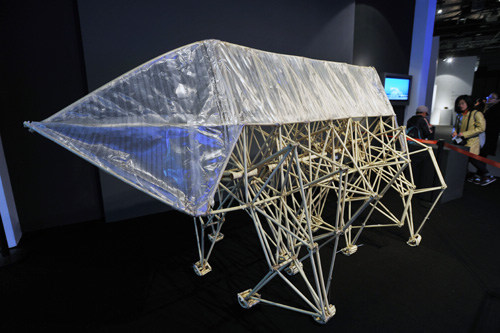 |
|
STRANDBEEST: The "beach beast," made by Dutch artist Theo Jansen, can walk on its own in a beach environment and get its energy from the wind (WEI YAO) |
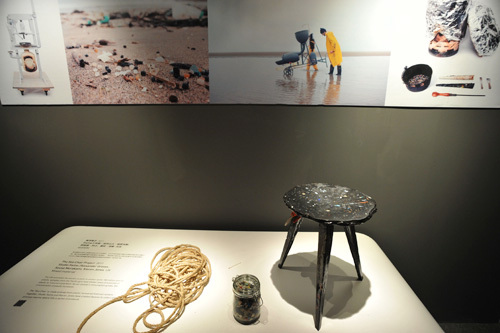 |
|
THE SEA CHAIR: The sea chair is made from plastic debris, which is collected and processed by Studio Swine and Kieren Jones from Britain (WEI YAO) |
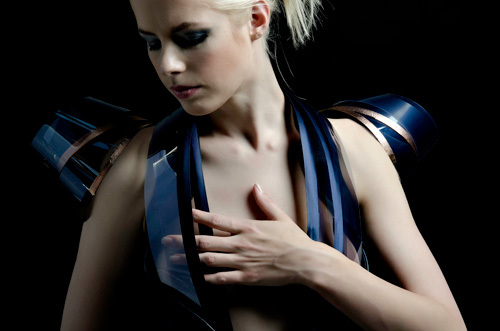 |
|
INTIMACY: The closer one stands to this garment, the more transparent it becomes. The garment is designed by Dutch artist Daan Roosegaarde (WEI YAO) |
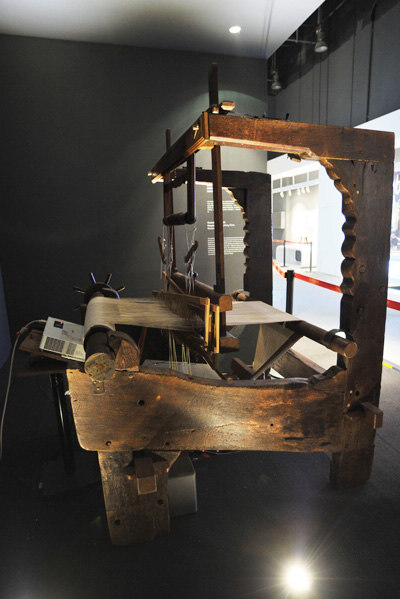 |
|
MUSICAL LOOM: Hong Kong artist Kingsley Ng has turned a 250-year-old French loom into a musical instrument with an infrared radiation camera and ultrasonic distance sensors. Hands placed in midair above the loom's threads cause it to create sounds (WEI YAO) |
Email us at: jijing@bjreview.com | 